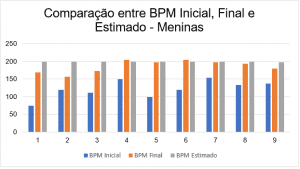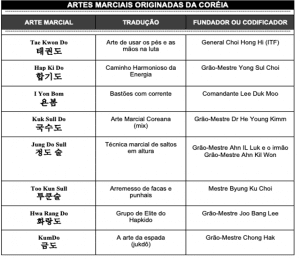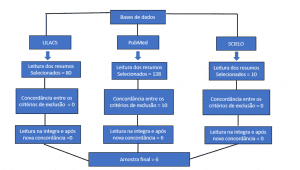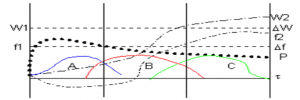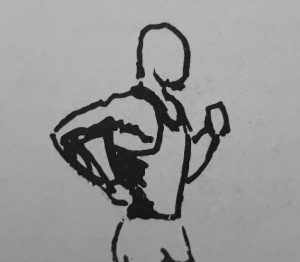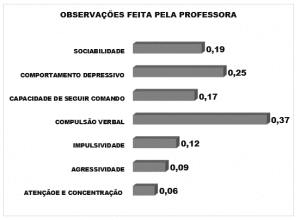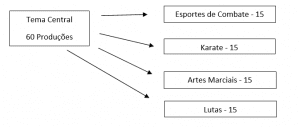ORIGINAL ARTICLE
GUIMARÃES, Michel [1]
GUIMARÃES, Michel. Strategy and tactics: The search for useful concepts to volleyball. Revista Científica Multidisciplinar Núcleo do Conhecimento. Year 05, Ed. 08, Vol. 03, pp. 69-80. August 2020. ISSN: 2448-0959, Access link: https://www.nucleodoconhecimento.com.br/education-physics-en/strategy-and-tactics
SUMMARY
The words strategy and tactics are widely used in the sports environment, including in the practice of volleyball. Many coaches and athletes use these words without understanding the real meaning of each one, and this is due, in large part, to the lack of didactic material that clarifys such concepts and makes a direct connection with the use in sport, and this issue is problematized by this article. This study aims to expose the concepts of strategy and tactics with clarity about their respective meanings and on how to apply them, with conviction, mainly, in the sports environment of volleyball. For this, the article brings concepts about strategy and tactics, as well as some uses of terms in the military, corporate and sports spheres, through bibliographic research. Among the considerations that this article allows to be gathered, we highlight the clarification about the concept of individual tactics in sports, allows, to any strategist, a reflection on the importance of the individual performance of the player within the team tactic.
Keywords: Strategy, tactics, volleyball.
1. INTRODUCTION
The concepts of strategy and tactics are very well defined in the military scenario because they have long been used in battles and wars. According to Sun Tzu (2016), historical accounts speak of the use of these concepts since approximately 2,500 years ago in ancient China, having as its greatest forerunner the Chinese general himself, Sun Tzu.
In the corporate scenario, it has been some time since large companies used the concepts brought by Sun Tzu, circumscribed with the proper and necessary adjustments to the business environment. Companies and organizations use them to plan and structure their growth in the market, delineating that each hierarchical level of the corporate organization has its share of contribution.
In sport, the terms ‘strategy’ and ‘tactics’ are also widely used, as recorded in literature and media related to the area. However, they seem not to be very clear about their meanings and their contributions within the sporting process.
Contributing to the aforementioned diagnosis, Bompa (2005) talks about the confusion that still exists in relation to the concepts of strategy and tactics in sport, reporting on regional preference in the use of terms, stating that, in some places, the use of the word strategy is preferred and, in others, the use of the word tactic to define the same actions.
This study will bring the origin of the concepts of strategy and tactics, as well as some other versions used in the military, corporate and sports environments.
At the end, it is expected to present a conceptual proposal about sports strategy and tactics for the use, mainly, in the sports environment of volleyball.
2. STRATEGY AND TACTICS: ORIGIN
According to Meirelles (1995 apud SANTOS, 2011), the word strategy has Greek origin and meant, at first, ‘the art of the general’, but with the passage of time and its use on the battlefields, it underwent changes, coming to be defined as “General, the art and science of leading an army down a path”.
According to Bompa (2005) also the tactic, as well as the strategy, has Greek origin, where tactics was called taktika and meant modes of organization, while, strategy was called strategos and meant general or general art.
When searching for the meanings of both words in the dictionary, one finds the following definition for strategy: “sf 1. Organization and planning of war operations; stratagem, tactics; 2. by ext ruse, morning, cunning.” (AMORA, 2000, p. 292). Already tactic is defined this way: “sf 1. Art of disposing and ordering troops for combat; 2. fig Skillful way used to run any business” (AMORA, 2000, p. 710).
Strategy and tactics, are therefore words of Greek origin, applied, formerly, with greater emphasis on the military area.
3. STRATEGY AND TACTICS IN THE MILITARY FIELD
The expressions ‘strategy’ and ‘tactics’ gained greater notoriety after the registration and publication of the work ‘The Art of War’, a millenary text in which the way the Chinese General Sun Tzu applied the two concepts in the battles and wars he was involved in.
According to Herrera (2007), in his work, Sun Tzu comments that the tactics responsible for victories in battles were easily perceived by men. However, the strategies he architected, responsible for guide the tactics, these were not noticed.
The previous paragraph makes us reflect on the importance of the strategy to achieve great victories and also makes us believe that the strategy precedes the tactic. Corroborating the previous idea, we have the following:
Strategy and tactics are classified separately in war theory, because the two terms have unique dimensions. The strategy applies to wide spaces, long periods and large troop movements. The tactic refers to smaller space, time and contingent. The strategy precedes the war plan, while the tactics are the action itself on the battlefield. (BOMPA, 2005, p. 38-39).
In view of the above, it is possible to infer that in the times cited there was a certain hierarchy in the use of expressions, an order in which a chronology is perceived, where it is proposed to define, first, a strategy to win the war, and then define what will be the tactics used in each battle.
The hierarchy of the above mentioned concepts is also mentioned by Chiavenato (2004), where the idea that the application of one or more strategies constitutes the way to win a war is exposed. Therefore, for each strategy a series of tactical actions may be required. The author also cites the mobilization of a specific troop as one of these tactical actions.
On the decision-making process in a war, when evaluating the factors that lead the general to decide on which strategies and tactics to use, Sun Tzu reveals: “whoever knows himself and knows the enemy can guarantee victory; who knows time and terrain, will reach it in an absolute way” (TZU, 2011, p. 82).
Thus, it is evident that the strategic plan leads to tactical plans, and that both are defined taking into account: the characteristics of the troop itself, the characteristics of the enemy troop, the characteristics of the seasons in which the battles are fought, and also the places where the battles take place.
4. STRATEGY AND TACTICS IN THE CORPORATE SPHERE
A continuous act, in business terms, “the strategy is the mobilization of all the company’s resources in the global scope in order to achieve the long-term objectives” (CHIAVENATO, 2004, p. 192). The author defines that the tactic is a smaller plan, with specific use of resources, aiming at fulfilling part of the general strategy.
Exemplifying the interaction between the two conceptions, and also in a temporal perspective, Chiavenato says: “planning for five years in the company requires a strategy, which links the tactical plans of each year understood in this period” (CHIAVENATO, 2004, p. 192).
Konichi Omae (apud HERRERA, 2006) presents the idea that the strategy corresponds to actions aimed at increasing the strength of the organization in front of its competitors. Yet Herrera (2007) cites the Houaiss dictionary by exposing one of his conceptualizations on tactics, defining it as the skillful way to overcome disputes and adversities through arrangement and organization.
In the corporate world, according to Chiavenato (2004), strategies are defined through the company’s strategic planning, within a trajectory that permeates the higher classes of the organization, such as the presidency and the boards, while tactics are defined through tactical planning, passing through the middle class of the organization, such as managers.
The whole process that underlies the formulation of the aforementioned, strategic and tactical plans, takes into account analyses about the internal and external environment of the company, where the strengths and weaknesses of the organization are listed, in parallel with the opportunities and threats of the market in which it operates.
Therefore, in this universe, the corporate, evaluate well its own condition of operation and productivity, and still have a real clarity about how is the market demand and the performance of its competitors, are the fundamental steps to achieve success.
5. STRATEGY AND TACTICS IN THE COLLECTIVE SPORTS FIELD
From another apex, in the collective sports sphere, initially urges to bring to the fore that Bompa (2005, p. 5) considers that “collective sports are among the most dynamic, exciting, spectacular and complex sports, captivated most teenagers who dream of becoming the next hero of millions of fans”.
When searching for the definition of sport in the dictionary, one finds its relationship with the word sport, which can be defined as this: “sm 1. Practice of physical exercises or games, individually or in teams; sports; 2. Fun, distraction; 3. Adj 2 gên is said to be comfortable, not formal” (AMORA, 2000, p. 285).
According to the previous definition, a sport is also a game that, in turn, according to Cavallari (2013, apud BORIM, [201-] ), is characterized by containing at least two components, being the rule and competitive characteristic. That is, in order to be characterized as a game in fact, the activity must be organized by complying with a rule and by the search for a winner.
Widely used in sports, the terms strategy and tactics are concepts that intertwine with ease. However, as we have seen in other areas, they are not the same thing and, although they seek the same end, which is to overcome a situation or an opponent, we must know how to distinguish them and point out the role of each one.
The strategy reflects the strategist’s intention that, as is expected in a competitive environment, is not revealed in the eyes of opponents. It is linked to what is intended to be achieved and why it should be achieved, while the tactic reminds us of how to achieve it. For example, the strategy of any team, of any modality, can be to focus your game on the counterattack due to the technical superiority of the opponent. From there, there is a need to develop a tactical plan, indicating how the team will position itself to defend, how it should regain possession of the ball, and as soon as it has conquered it, how it will perform the counterattack. Therefore, the strategy reflects intent, while the tactic reveals how to implement it.
Using the example mentioned in the previous paragraph, it is perceived that the supposed team will decide for a specific strategy after comparing their own forces and the opponent’s forces, which reveals the importance of knowing their own characteristics and also the characteristics of their opponent before the elaboration of winning strategic and tactical plans. The need to know the opponent is contained in Baacke’s definition (apud CONFEDERAÇÃO BRASILEIRA DE VOLEIBOL, 1998, p. 161), about tactics, where he says: “tactics is the totality of individual and collective actions, attack and defense that, based on the rules and way of playing the opponent, determine the conception of the structure of the game to obtain the best result”.
As can be seen in the concept defined by Baacke (apud CONFEDERAÇÃO BRASILEIRA DE VOLEIBOL, 1998, p. 161), it is remarkable the relevance of the sportsman having knowledge about the rules of the modality in which he operates, juxtaposed to the knowledge about the opponent, for the elaboration of game plans, both offensive and defensive.
The sports modalities in which the opponents face each other directly are practiced through attack and defense actions, which, in order to occur consistently, must follow previously defined offensive and defensive strategies and tactics. About this, Bompa (2005, p. 39) states that “teams and players perform attack or defense actions in a game, according to pre-established tactical plans. Such tactical actions should be part of the strategic structure of the game.”
When we analyze collective sports, we need to divide the tactic into collective tactics and individual tactics, so that the analysis is more complete, because, let’s see: if a strategy guides tactics, when these tactics guide the actions of more than one player, it is expected that such actions are not uniform among all players, however much they are of the same team and as much as the situations are similar. Each player has their own way of interpreting, deciding and acting in the face of a specific situation, and even if a given situation presents itself equally to players subjected to the same collective tactic, the response of these players will be potentially different. This unique ability of each player is called an individual tactic.
On the individual tactic, the Confederação Brasileira de Voleibol (CBV), through one of its handouts, brings the following concept: “individual tactics is the ability that the athlete has from within an available time, analyze, decide and respond to a game situation aiming at obtaining the best result” (CONFEDERAÇÃO BRASILEIRA DE VOLEIBOL, 1998, p. 94).
According to Lerbach et al (2002, p. 24), “the individual tactic is the perceptual use of the technique in the calculation of the opponent’s reactions”.
Following the reasoning that the dealing of collective sports allows and provokes the ordering of tactics in collective and individual, and recounting the contribution of what Carvalho teaches (2014) on corporate strategy and tactics, it is worth pointing out some characteristics that differentiate strategy, collective tactics and individual tactics, among themselves, in order to understand them better, as the following picture brings :
Table 1 – Characteristics of strategy, collective tactics and individual tactics.
| Strategy | COLLECTIVE TACTICS | INDIVIDUAL TACTICS |
| It’s a PLANNING tool. | It is an EXECUTION tool. | It is an exclusively INDIVIDUAL tool. |
| It aims at a Goal. |
It targets a META. | Aims TO OVERCOME A SITUATION. |
| It is associated with the WHAT TO DO and to WHY DO. |
It is associated with the HOW TO DO. |
Junction of the WHAT TO DO when HOW TO DO. |
| It’s about the future, it‘s PROACTIVE. | It deals with the present, can be ACTIVE or REACTIVE. | It deals with the immediate gift, it is SUPER REACTIVE. |
| Comprehensive performance, is a BIGGER PLAN. | Reduced performance, it’s a smaller PLAN. | Restricted performance, is a SPECIFIC PLAN. |
| Contains Tactics. |
It is part of the STRATEGY and contains INDIVIDUAL TACTICS. |
It is part of the COLLECTIVE TACTICS. |
Source: elaboration of the author.
It has, therefore, been that for collective sports, it is possible to conceptualize that the strategy serves as a guide for the application of tactics; the collective tactic scans the way the team will behave in the face of offensive and defensive situations; and individual tactics are characterized by the decisions each player will make in his time to act.
6. STRATEGY AND TACTICS IN VOLLEYBALL
Once the considerations about strategy and tactics are described, considering that volleyball is a sport of collective practice, it can be concluded that it applies the definitions of strategy and tactics, collective and individual, brought above for collective sport, if not: according to Bizzochi (2013), volleyball was invented in 1895, in the city of Holyoke, Massachusetts , United States, by William George Morgan, and is defined thus by the same author:
Volleyball is a game played between two teams of six players, within a rectangular court divided into two equal squares, separated by a net. The goal of the game is to get the ball over the net and fall into the opponent’s court. Each team can touch the ball three times and each player cannot do so in a row. The blows on the ball – usually with the hands and forearms – should be instantaneous and not allowed to hold it. The points are disputed from an action called a score and the point in dispute is the team that achieves the goal of the game. Matches are played in sets of 25 points – except the fifth set, played on 15 points-, leaving victorious the team that wins three sets (BIZZOCHI, p. 2013, p.1).
Thus, volleyball can be considered a collective sport, where opponents face each other alternating attack and defense actions.
Volleyball is played through six technical grounds, of which withdrawal, lifting and attacking are the fundamentals classified as offensive; and reception, blocking and defense, fundamentals classified as defensive.
In a game perspective, the volleyball team must have a general strategy to face its opponent, which guides the elaboration of specific strategies for each foundation or, even, for each group of fundamentals, the so-called offensive and defensive systems. After the elaboration of the mentioned strategies, the general and the specific ones, it is then defining which collective tactics will be used to achieve the established strategies. In turn, the individual tactic will be the fruit of the perception and decision that the player will have at the time of action.
To collaborate with the previous statement, it will show how the concepts studied so far can focus on a foundation of the game, such as on the commission. The loot is the foundation that starts the point dispute in volleyball, it is followed by a reception of the opponent, which when well executed, facilitates the lifting and attack of the team that received, therefore, hinders the defensive actions of the team that drew. Therefore, it is logical to think that drawing strongly can inhibit the aggressiveness of the opponent’s attacking actions.
Thus, when the overall strategy of a team is to be aggressive, often during the game, because it considers the strongest opponent technically, the team in question will seek to avoid the exchange of balls, that is, seeks to finalize the points disputes as soon as possible. This strategy focuses on the draw too, which happens to have the following specific strategy: aggressively draw to “break” the reception and make the ball come back easily or make the point straight over the opponent. After that, the tactic, that is, the way in which the strategy will be sought, begins to be defined through its variables, such as: which technique, from where, to where, what the distance and what height should be draw. The individual tactic comes into play when executing the sack, where the sacador must observe the players of the opponent’s reception and, upon noticing some kind of anticipation, modify, at the last moment, one of the tactical variables mentioned above and, if there is no reason to make such modifications, should maintain the collective tactical programming.
After the above, it is possible to understand the importance of both strategy and collective and individual tactics, as well as understand the interaction between these components, to achieve success in a volleyball game.
7. FINAL CONSIDERATIONS
Although strategy and tactics look the same and seek the same goal, they are different. These differences enlighten us about the hierarchy that exists between them, as well as about the contribution of each one in the decision-making process, whether in the military, corporate or sports.
It is clear, after reading this article, that talking about strategy refers to thoughts and ideas that guide precise actions, that is, tactical actions, about something that is intended to be conquered. More than that, the organization between the concepts is clarified, where it is perceived that in order to fulfill an established strategy, it is necessary to define at least one tactical action, and that it can take place in various ways.
Therefore, one can conceptualize strategy as the action plan defined to achieve the desired objectives, while tactics can be conceptualized as the organized execution of the procedures necessary to apply a defined strategy.
In sport, using the definitions proposed above and the characteristics of sports activity, one can define strategy as the action plan defined to overcome the opponent both offensively and defensively.
The tactic can be defined as the organized execution of the procedures necessary to comply with offensive and defensive strategies. In turn, the individual tactic is characterized by being the solution found and applied by the player to succeed in a situation of opposition to the opponent.
The clarification on the concept of individual tactics in sport, allows, to any strategist, a reflection on the importance of the individual performance of the player within the team tactic. The realization of this article does not have any intention of being the final point on the concepts analyzed and proposed here, but rather of being a starting point capable of making us reflect, even more, on them. Although strategy and tactics are terms that emerged a long time ago in ancient Greece, and which have been widely used in military battles and wars, their concepts are currently widely used by corporate organizations and also by sports teams, facts that show the importance of understanding these concepts to achieve professional success.
REFERENCES
AMORA, Antônio Soares. Minidicionário Soares Amora da Língua Portuguesa. 7. ed. São Paulo: Saraiva, 2000.
BIZZOCHI, Carlos. O voleibol de alto nível: da iniciação à competição. 4. ed. Barueri: Manole, 2013.
BOMPA, Tudor Olimpius. Treinando atletas de desporto coletivo. São Paulo: Phorte, 2005.
BORIM, Jayne Maria. Curso de jogos pré-desportivos. [201-]. Disponível em: <https://www.colaboraread.com.br/aluno/webaula/index/2118751601?atividadeDisciplinaId=6235385#3>. Acesso em: 10/06/2020.
CARVALHO, Camila. Estratégia x Tática. Portal Administradores, publicado em: 29/07/2014. Disponível em: <https://administradores.com.br/artigos/estrategia-x-tatica>. Acesso em: 05/06/2020.
CHIAVENATO, Idalberto. Introdução a Teoria Geral da Administração. 3. ed. Rio de Janeiro: Elsevier, 2004.
CONFEDERAÇÃO BRASILEIRA DE VOLEIBOL. Apostila do Curso Nacional de Treinadores de Vôlei de Praia – Nível II. Rio de Janeiro, 1998.
HERRERA, Wagner. Estratégia e Tática – 01. Portal do Marketing, publicado em: 24/05/2007. Disponível em: <http://www.portaldomarketing.com.br/Artigos/Estrategia_e_Tatica_01.htm>. Acesso em: 02/06/2020.
HERRERA, Wagner. Estratégia e Tática. Blog Administração Estratégica, publicado em: 02/11/2006. Disponível em: <http://wagnerherrera.blogspot.com/2006/11/estratgia-e-ttica.html>. Acesso em: 01/06/2020.
LERBACH, Antônio Marcos et al. Apostila do Curso Especial de Voleibol. Blumenau: UniSesi, 2002.
SANTOS, Júlio Cesar De Souza. Estratégia: Origem, Conceitos e Definições. Portal Brasil Escola, publicado em: 04/03/2011. Disponível em: <https://meuartigo.brasilescola.uol.com.br/administracao/estrategia-origem-conceitos-definicoes.htm>. Acesso em: 01/06/2020.
TZU, Sun. A arte da guerra. Adaptação e Prefácio de James Clavell. 56. ed. Rio de Janeiro: Record, 2016.
TZU, Sun. A arte da guerra: os treze capítulos originais. São Paulo: Jardim dos Livros, 2011.
[1] Graduated in Physical Education (UNIASSELVI), Specialist in Physical Education School (UCEFF), Specialist in Sports Training (UNOPAR).
Sent: July, 2020.
Approved: August, 2020.

